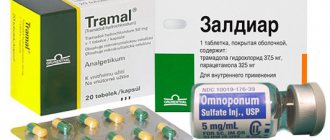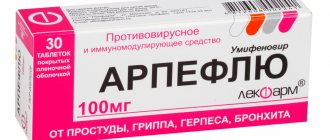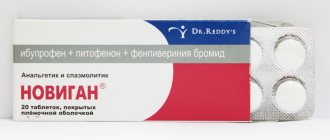Directions for use and dosage
The tablets are taken orally 1 time per day with a small amount of water, regardless of meals.
The use of Amzaar should be started after preliminary titration of the doses of losartan and amlodipine. If necessary, you can switch to combination therapy from taking losartan or amlodipine separately.
When switching from simultaneous use of losartan and amlodipine, the dose of the drug is prescribed in accordance with the doses of the previous monotherapy.
The use of tablets is indicated for patients in whom similar doses of losartan (50 mg) or amlodipine (5 mg) do not sufficiently control blood pressure (BP).
In case of renal failure with CC 20-50 ml/min, patients do not require dose adjustment. When CC is less than 20 ml/min and hemodialysis, it is necessary to adjust the doses of the active components of the drug; prescribing Amzaar in this case is not recommended.
In patients taking diuretics in high doses, taking the drug is possible if sufficient volume replenishment is ensured, but only if it is not necessary to reduce the dose of losartan to 25 mg.
In case of liver failure (below 9 points on the Child-Pugh scale), the use of the drug is allowed if, in the opinion of the doctor, it is possible to prescribe losartan at a dose of 50 mg.
Over the age of 65 years, the drug is prescribed to patients with adequate tolerance to a dose of losartan 50 mg.
Side effects
- Cardiovascular system: uncommon – flushing of the face, palpitations, orthostatic hypotension;
- Nervous system: often – headache, dizziness; infrequently - drowsiness;
- Dermatological reactions: infrequently - urticaria, skin itching;
- Respiratory systems: infrequently - shortness of breath;
- Digestive system: uncommon - abdominal discomfort, dyspepsia, esophageal reflux, vomiting, constipation;
- Urinary system: infrequently – frequent urination;
- Labyrinthine disorders and the organ of hearing: infrequently - systemic dizziness;
- General disorders: uncommon - peripheral edema, pain or discomfort in the chest, asthenia, feeling of fullness in the abdomen.
Side effects that occur during monotherapy with losartan:
- Cardiovascular system: uncommon - cardiac arrhythmias (sinus bradycardia, atrial fibrillation, ventricular tachycardia, tachycardia, ventricular fibrillation), myocardial infarction, palpitations, angina pectoris, vasculitis, orthostatic hypotension, arterial hypotension, fainting;
- Nervous system: often – headache, fatigue, dizziness, insomnia, asthenia, increased weakness; uncommon – sleep disturbances, paresthesia, cerebrovascular accident, peripheral neuropathy, drowsiness, memory disorder, ataxia, hyperesthesia, tremor, memory impairment, systemic dizziness, nervousness, migraine;
- Lymphatic system and blood system: uncommon – anemia; rarely – thrombocytopenia;
- Digestive system: often – abdominal pain, dyspepsia, nausea, diarrhea; uncommon – dry mouth, taste disturbance, anorexia, constipation, flatulence, toothache, gastritis, hepatitis, pancreatitis, functional liver disorder;
- Mental disorders: uncommon – depression, anxiety, confusion, anxiety, panic disorder, unusual dreams;
- Dermatological reactions: uncommon - dry skin, itching, redness of the skin, alopecia, skin rash, Henoch-Schönlein purpura, increased sweating, photosensitivity;
- Metabolism and nutrition: infrequently – gout;
- Respiratory system: often - dry cough, shortness of breath, bronchitis, chest pain, throat discomfort, rhinitis, nosebleeds, laryngitis;
- Urinary system: uncommon – nocturia, urinary tract infection, urinary frequency disturbance; very rarely - renal failure;
- Labyrinthine disorders and the organ of hearing: infrequently – ringing in the ears;
- Organ of vision: uncommon – decreased visual acuity, burning sensation in the eye, blurred vision, conjunctivitis;
- Genital organs and mammary gland: infrequently – impotence, decreased libido;
- Allergic reactions: infrequently - angioedema, urticaria;
- Musculoskeletal system: often - swelling of the joints, cramps, joint stiffness, pain; uncommon – arthralgia, fibromyalgia, arthritis; rarely - rhabdomyolysis;
- General disorders: fever, facial swelling, increased weakness, asthenia.
Side effects observed with amlodipine monotherapy:
- Cardiovascular system: often – palpitations; infrequently – severe decrease in blood pressure; very rarely - shortness of breath, orthostatic hypotension, vasculitis, worsening or development of chronic heart failure, cardiac arrhythmias (including ventricular tachycardia, bradycardia, atrial fibrillation), fainting, myocardial infarction, pulmonary edema, chest pain, edema of the lower extremities;
- Nervous system: often - drowsiness, headache (usually at the beginning of use), increased fatigue, dizziness; uncommon – increased excitability, general malaise, paresthesia, hyperesthesia, anxiety, peripheral neuropathy, insomnia, tremor, unusual dreams; very rarely - increased sweating, apathy, agitation, asthenia, migraine, ataxia, amnesia;
- Digestive system: often – abdominal pain, nausea; uncommon – thirst, dry mouth, dyspepsia, vomiting, constipation, flatulence, diarrhea, anorexia; rarely – increased appetite, gum hyperplasia; very rarely - gastritis, pancreatitis, jaundice, hyperbilirubinemia, hepatitis, increased activity of liver enzymes;
- Hematopoietic system: very rarely - leukopenia, thrombocytopenia, thrombocytopenic purpura;
- Mental disorders: infrequently – depression, mood lability;
- Urinary system: uncommon – nocturia, painful urination, frequent urination; very rarely - polyuria, dysuria;
- Genital organs and mammary gland: uncommon – impotence, gynecomastia;
- Respiratory system: infrequently – rhinitis, shortness of breath; very rarely – cough;
- Musculoskeletal system: uncommon – myalgia, muscle cramps, arthralgia, arthrosis, back pain; rarely - myasthenia gravis;
- Sense organs: infrequently - pain in the eyes, ringing in the ears, impaired accommodation, diplopia, conjunctivitis, xerophthalmia; very rarely - parosmia;
- Dermatological reactions: often - flushes of blood to the skin of the face; rarely – Stevens-Johnson syndrome, exfoliative dermatitis; very rarely - cold sweat, alopecia, skin pigmentation disorder, xeroderma;
- Allergic reactions: very rarely - skin itching, rash (including maculopapular, erythematous, urticaria), erythema multiforme, Quincke's edema, photosensitivity;
- Metabolism: very rarely – hyperglycemia;
- Other: infrequently - nosebleeds, loss or increase in body weight.
Contraindications
- Stenosis of the aortic mouth with severe hemodynamic disturbances;
- Severe liver failure (above 9 points on the Child-Pugh scale);
- Shock;
- Severe arterial hypotension;
- Age up to 18 years;
- Pregnancy and breastfeeding period;
- Hypersensitivity to the components of the drug.
It is recommended to prescribe Amzaar with caution: to patients on a diet that limits salt intake, with hyperkalemia, renal failure (creatinine clearance (CC) less than 20 ml/min) or hemodialysis, liver failure (below 9 points on the Child-Pugh scale), arterial hypotension, mitral stenosis, aortic stenosis, sick sinus syndrome (SSNS) (tachycardia, severe bradycardia), hypertrophic obstructive cardiomyopathy, chronic heart failure of non-ischemic origin (II-IV functional class according to the NYHA classification), acute myocardial infarction (and during 4 weeks after it), with a reduced circulating blood volume (CBV) associated with taking high doses of diuretics, severe diarrhea, vomiting and other conditions causing hypovolemia in old age.
Release form and composition
Dosage form - film-coated tablets: oblong biconvex shape, engraved on one side: on almost white or white tablets - “AT1”, on pink or light pink tablets - “AT2” (10 pcs. per blister, 1 or 3 blisters in a cardboard pack; 300 pcs. in a polyethylene bottle, 1 bottle in a cardboard pack).
Content of active ingredients of Amzaar in 1 tablet:
- Losartan potassium: 50 mg (AT1) or 100 mg (AT2);
- Amlodipine camsylate: 7.84 mg, equivalent to 5 mg amlodipine.
Auxiliary components: microcrystalline cellulose, crospovidone, mannitol, povidone K30, sodium carboxymethyl starch, butylated hydroxytoluene, magnesium stearate.
Shell composition: hyprolose, hypromellose 2910, titanium dioxide, talc.
Additionally, the shell of tablets engraved with “AT2” contains: red iron oxide dye, yellow iron oxide dye.


